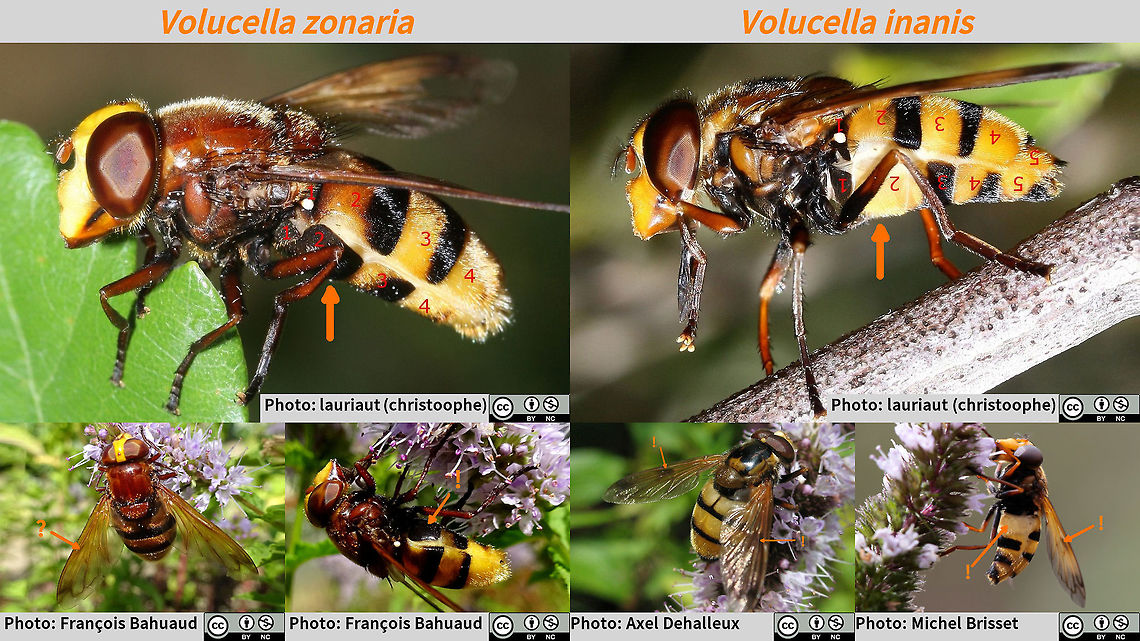
Volucella zonaria vs inanis CC-BY-NC various authors
Collage I created today (for some other discussion somewhere) using images kindly made available at galerie-insecte.org under a CC-BY-NC license.
The two species can look very much alike. Usually the dorsum of the pronotum is darker and duller on inanis and lighter and more shiny on zonaria, but the shine is difficult to use, especially on photos in bright sunlight or when a flash is used. Male zonarias usually have the pronotum as dark as in inanis and darker females also occur and in inanis lighter specimen are known, so the colour of the pronotum is helpful but not fully diagnostic it would seem.
Same seems to go for the colour of the 2nd tergite (dorsal abdomen plates): Normally more orangy-brown in zonaria, and bright yellow in inanis, but fairly variable and hence difficult to use as "fully" diagnostic.
Best character for ID is the colour of the 2nd sternite, but many, many photos are dorsal only, so this won't show.
Helpful in dorsal images is the little dark spot that inanis has about halfway down the wing and near the front, but it is not always clear. The zonaria bottom left has a darkish-"shade"(?) there too, which could be a shadow or an underdeveloped true spot. In this case a lateral image was available, so we know for sure it was zonaria, but from the dorsal image I wouldn't want to confirm it, based on my current laymen's state of understanding.
If anyone has more ideas that are helpful in dorsal images please DO tell :o)
No species identified
The species on this photo is not identified yet. When signed in, you can identify species on photos that you uploaded. If you have earned the social image editing capability, you can also identify species on photos uploaded by others.

comments (2)